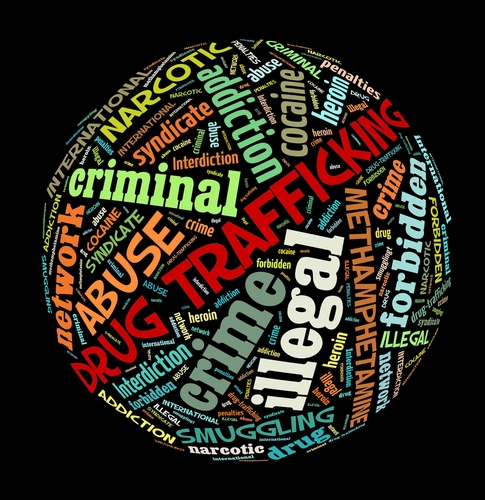Written by Sofia López Piqueres,

Used under licence from Shutterstock.com
In 1987 amid growing concerns over the dimensions of what is often referred to as the ’world drug problem’, the United Nations (UN) General Assembly passed resolution 42/112 establishing 26 June as the ’International Day against Drug Abuse and Illicit Trafficking‘ to raise awareness of these issues. Through the observance of this day, the UN aimed to underline the need to reinforce cooperation so as to achieve the objective of an international society free of drug abuse. The UN, however, had been working on these topics for over two decades before the International Day was declared. The first major UN Convention on drugs was the Single Convention on Narcotic Drugs of 1961, an initiative spurred by the USA with the aim of replicating at global scale their prohibitionist approach to the production and supply of narcotic drugs (except for medical and scientific purposes). In this Convention, substances were divided in four schedules depending on their risk and supposed therapeutic value.
In the 1960s a new range of psychoactive substances became fashionable and countries decided to step up their combat against drugs. Some argue that the pressure exerted by the large pharmaceutical industry in the US and Europe, worried about seeing its products subject to the same strict controls set out in the 1961 Convention, was key in the negotiation of the 1971 Convention on Psychotropic Substances, in which a difference between ’narcotics‘ and ’psychotropic substances‘ was incorporated. This differentiation was translated into less severe controls of all substances other than those contained in schedule I, which the Commission on Narcotic Drugs considered to have no therapeutic value. In the 1970s and 1980s, in order to meet the increasing demand for cannabis, heroin and cocaine for non-medical purposes, criminal groups spread and illicit drug trafficking grew into a very profitable business. When the biggest surge in the use of crack cocaine across the United States occurred in the 1980s, the US government opted to introduce compulsory sentences in its legal system and tried again to export its model, urging other countries to join their ’war on drugs’.
In this context, the UN convened a conference whose outcome was the Convention against Illicit Traffic in Narcotic Drugs and Psychotropic Substances of 1988. This Convention added several precursor chemicals, reagents and solvents widely used in the illicit manufacture of narcotic drugs to the schedules. However, the most controversial element was that it reinforced the obligation of countries to criminalise all aspects of the illicit production, possession and trafficking of the substances listed in those treaties.
It was also in the 1980s, a decade in which the consumption of heroin in Europe peaked, that the European Communities started collaborating in the fight against drug trafficking and drug addiction at the UN level. One of the first key interventions was the participation in the 1988 Vienna Conference that shaped that year’s Convention. That same year, at the initiative of the European Parliament, a specific line to address the problem of drugs was included in the Community budget.
Furthermore, since the adoption of the 1988 Convention, the EU has been participating in the UNGASS (United Nations General Assembly Special Session on Drugs) debates, and since 2007 it has presented its common positions on the topics at stake. The EU has also developed several Strategies and Action Plans in the fight against drugs over the years, the most recent one being the EU Drugs Strategy for 2013-20.
EU actions are carried out against the backdrop of Article 168 of the Treaty on the Functioning of the EU, which states that the Union’s action is complementary to that of its Member States when it comes to ’reducing drugs-related health damage, including information and prevention’. The Member States, however have given the Union the mandate to regulate some specific issues related to drug trafficking. These include preventing money laundering and the diversion of chemical precursors used in the manufacturing of illicit drugs.
At the beginning of the 1990s, the idea that the war on drugs was a failure began gaining strength in Europe, as illustrated by a number of European Parliament resolutions and recommendations. The idea to move away from the ’police and justice‘ approach to drug-related problems and treat them as healthcare issues has been gaining ground in the EU. In particular, the concept of ’harm reduction‘ – at first a distinctive element of some domestic drug policies – came to be accepted at EU level as part of a balanced approach combining prevention, treatment, social rehabilitation and supply-reduction measures, and it was then promoted by the EU at UN level.
The lack of consensus among EU Member States on the need to maintain, amend or repeal the UN Conventions on drugs, was neither reflected in the UNGASS 2016 outcome document, nor in the EU common position on UNGASS 2016, which highlighted that the EU maintains a ’strong and unequivocal commitment to the UN Conventions‘. In addition to the lack of consensus, possible pressure exerted by the US may have played a role in keeping the EU’s commitment to the UN Conventions.
Current trends of drug consumption in the EU
The disparities between Member States apply also to drug consumption patterns. The 2016 European Drug Report elaborated by the European Monitoring Centre for Drugs and Drug Addiction concluded that cocaine use is higher in western and southern Europe, whereas amphetamines prevail in northern and eastern Europe. This study also noted that there has been a recent growth in the consumption of cannabis and stimulant drugs such as MDMA, as well as an escalation in the number of deaths related to misused medicines.








Be the first to write a comment.